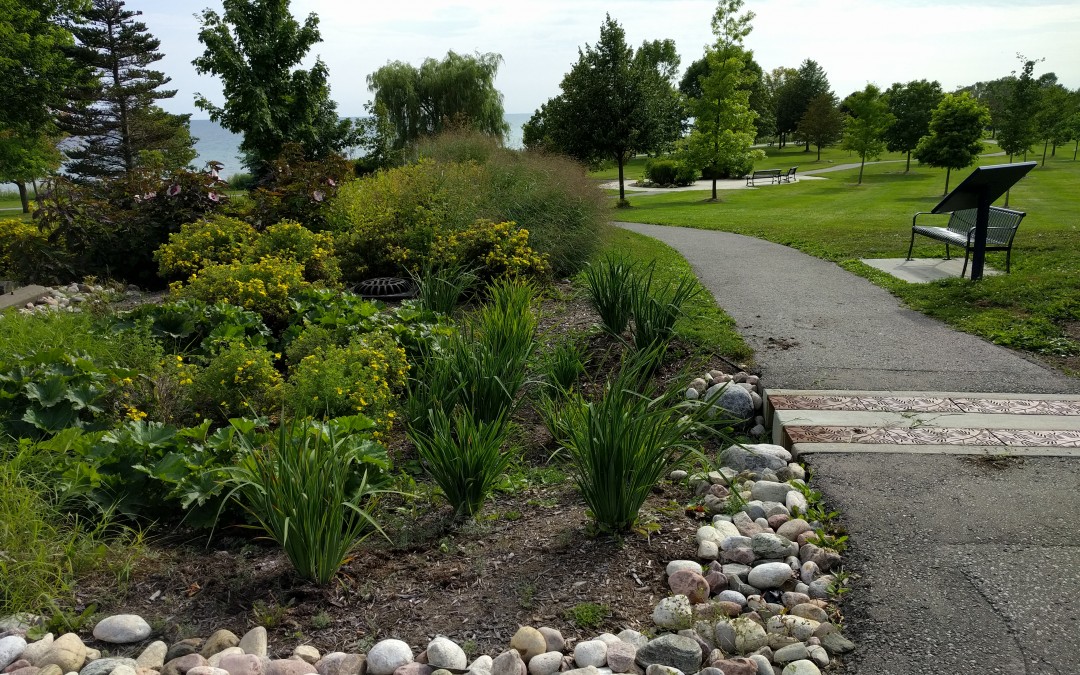The Umbrella Stormwater Bulletin

Ajax and London manage rain where it falls
Photo: Rain garden in Ajax. Credit: Stephen Ruddy, Town of Ajax.
In anticipation of new rules in Ontario that will require runoff volume control, some forward-thinking municipalities are proactively beginning to incorporate green infrastructure into municipal activities. Here we profile some examples from the Town of Ajax and the City of London.
Harwood Avenue in Ajax is a major thoroughfare which runs North-South, ending at Lake Ontario. This part of South Ajax (as with many areas of town) has no stormwater quality treatment and runoff discharges directly into the Lake. When bike lanes were being installed along south Harwood, the stormwater department intervened to get the inclusion of boulevard rain gardens to provide water quality treatment. The gardens provide the dual purpose of calming traffic and treating stormwater.
Just a few hundred metres away, another pilot project, installed in 2015, tests different soil media in three rain gardens which absorb runoff from parking lots along Lake Driveway, used by visitors to the park along the waterfront. The upstream catchbasins were removed, and the gardens are designed to pond up to one foot and manage the 25mm rain event. After two years of maintenance by the consulting company that designed and constructed them, maintenance is now being transferred to the Town. While there have been some issues with weeds in the gardens, no complaints from residents have been registered, and the gardens are functioning as designed (a monitoring report is forthcoming). More rain gardens are in the works in the five year plan for the stormwater department.
The City of London is well aware of the upcoming change in the rules which will require infiltration. Two pilot projects this year test out how to build rain gardens, bioswales, and infiltration galleries during regular road and sewer reconstruction.
Completed in September 2017, one project is in a residential neighbourhood, where the rain gardens have been installed in the right of way. Homeowners were consulted about whether they wanted a planted garden or a grassed bioswales, depending on the level of maintenance they were willing to undertake. The final installation included 4 rain gardens, 1 bioswale, 5 infiltration galleries and 1 infiltration trench. Regular storm sewers were also built as part of this project.
The other pilot is closer to the downtown, on a street with a large right of way, where one or two blocks will be fitted with rain gardens. The City is partnering with the local community association to provide maintenance and get resident and business-owner buy in. Three more streets are planned for the next year.
These two Ontario communities have seen the way the wind is blowing – managing rain where it falls will soon be business as usual. They are getting ahead of the curve and finding out what they need to learn in terms of cross-departmental collaboration, design, construction, and maintenance to ensure the successful functioning of green infrastructure measures.

